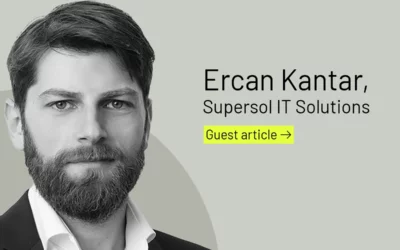Fight ad fraud: 40 to 60 percent of all internet traffic comes from bots. Invalid Traffic (IVT) generated by these algorithms relates in particular to ad impressions or click activities and often causes immense economic damage to advertisers. Statista Research estimates this to be around USD 100 billion by 2023.
The programmatic sector is particularly hard hit by IVT. Due to the complex structure and the large number of players and data flows in programmatic buying, malicious players are given the opportunity to infiltrate the system and exploit it for their own benefit. Sufferers of these attacks are publishers, advertisers, and Demand Side Platforms (DSPs) alike – with varying degrees of impact:
Impact on Publishers
In many forms of ad fraud, money intended for legitimate publishers mistakenly ends up in the hands of the fraudsters – usually through no fault of the publishers themselves. In addition, the trust between advertisers and publishers is also extremely damaged by false media buying on dubious sites. One example: in domain spoofing, for example, where a fake website poses as a legitimate one, advertisers pay horrendous sums for fake ad inventory. A few years ago, for example, the renowned Financial Times newspaper found that fake FT.com inventory was being sold on several premium exchanges. The estimated damage: about $1.3 million per month. In addition, advancing technological developments make it very easy to create fake websites – for example, with the help of AI. According to OMR News, “AI content farms” are mushrooming on the web. For example, according to OMR, the website World-Today-News.com recently published 8,600 articles in just one week.
Disadvantages for advertisers
Advertisers, on the other hand, often suffer from Invalid Traffic, more precisely Sophisticated Invalid Traffic (SIVT), which is mostly based on fraudulent manipulations. These include:
- hidden ads / ad stacking
- cookie stuffing
- Auto-reload / auto-refresh of websites and ads
- proxy traffic
- click farms
- click fraud by competitors
- domain / device spoofing
In this case, clicks (fake clicks) and impressions generated by bots eat up the advertising budget without generating customers / leads. In addition, these bots imitate human behavior, which often leads to distorted remarketing lists (fake remarketing) and contaminated target groups. Targeted optimization of advertising campaigns thus becomes almost impossible.
Dangers for Demand Side Platforms (DSP)
Even the DSPs favored by advertisers show IVT rates of 20 – 30 percent with false media buying (especially open auction). In this context, the advertising fraud generated by bots extends across various media and formats – banner ads, video ads, in-app advertising, search engine marketing or affiliate marketing. This then has a significant impact on all marketing strategies and models – such as retargeting and prospecting.
Marketing budgets in jeopardy by ad fraud: advertisers pay massively more
Advertisers crave high volumes of programmatic ads, low cost per mille (CPM) prices, and high click-through rates.
However, it is questionable whether the trillions of ad impressions generated are really people or large portions of these volumes are generated solely with the help of bots. The results here speak for themselves. IVT rates of 20 – 30 percent are not uncommon. Particularly in focus are so-called long-tail websites or also MFA sites (Made for Advertising).
Since the fraudsters incur minimal costs for content, margins of 90 percent are possible for them without any problems.
Strongly influenced Cost per Mille (CPM) / Cost per Click (CPC)
Advertisers should be aware that as soon as they buy ads with a low CPM via programmatic channels, the majority of these ads almost automatically end up on the screen of fraudulent bots. This is the reason why the prices are comparatively low. By mixing in low-quality ad inventory, ad fraud lowers advertisers’ average CPMs and CPCs. Fake websites can sell ads at very low CPMs while still being profitable due to the low cost of content creation. Using AI, content from legitimate publishers, for example, will simply copy and display on fake sites. This dramatically inflates the number of impressions advertisers believe they can buy. As a result, average CPMs are drastically lowered and advertisers are led to believe that they got a really good deal when they bought ads.
The graph below depicts a 40 – 50 percent drop in CPMs due to bot activity.
The following examples are illustrated in the graph:
If you exclude bots from campaign CPMs, the adjusted CPM is $6.87 versus $3.95 (without bot exclusion).
The largest deltas are found in Android apps and Windows desktop.
Bots are concentrated in the highest margin categories, such as Android apps and Windows desktop browsers (especially Chrome).
Bots are less likely to pretend to be iOS or Safari, where there are lower CPM prices for each unit of activity.

Prevent Ad Fraud: What advertisers can do
The big challenge for publishers, advertisers and DSPs is: to ensure quality detection and assurance of impressions and clicks.
To do this, it is initially advisable for advertisers to buy from reputable publishers. Although the unit prices (CPMs) are higher, fewer ad impressions are required because the ads are actually seen by people in the first place. To this end, advertisers should primarily rely on active protection measures across all online marketing channels in order to sustainably rid programmatic campaigns of fake inventories and fraudulent apps.
In order to detect click fraud, which particularly affects CPC, and to reduce it in the future, it is also advisable to install a fraud detection solution on the website itself so that invalid traffic can be detected and measures taken. On the subject of “detecting and reducing impression fraud“, it is also advisable for advertisers to carry out a measurement offsite – i.e. within the ad itself. On the basis of these measurement results, they can permanently exclude fake impressions from their campaigns by cleaning them up via block lists and thus successively optimize them. The result is much more secure marketing budgets and real leads and business success!

About the author:
Daniel Distler is Co-Founder & Managing Director of Fraud0 and a proven specialist in the topics of combating ad fraud and click fraud.



